Art About Life, Death, and Clowning
Celebrated Late Artist Keith Puccinelli Shines Posthumously with ‘POOCH’ Exhibition, at UCSB
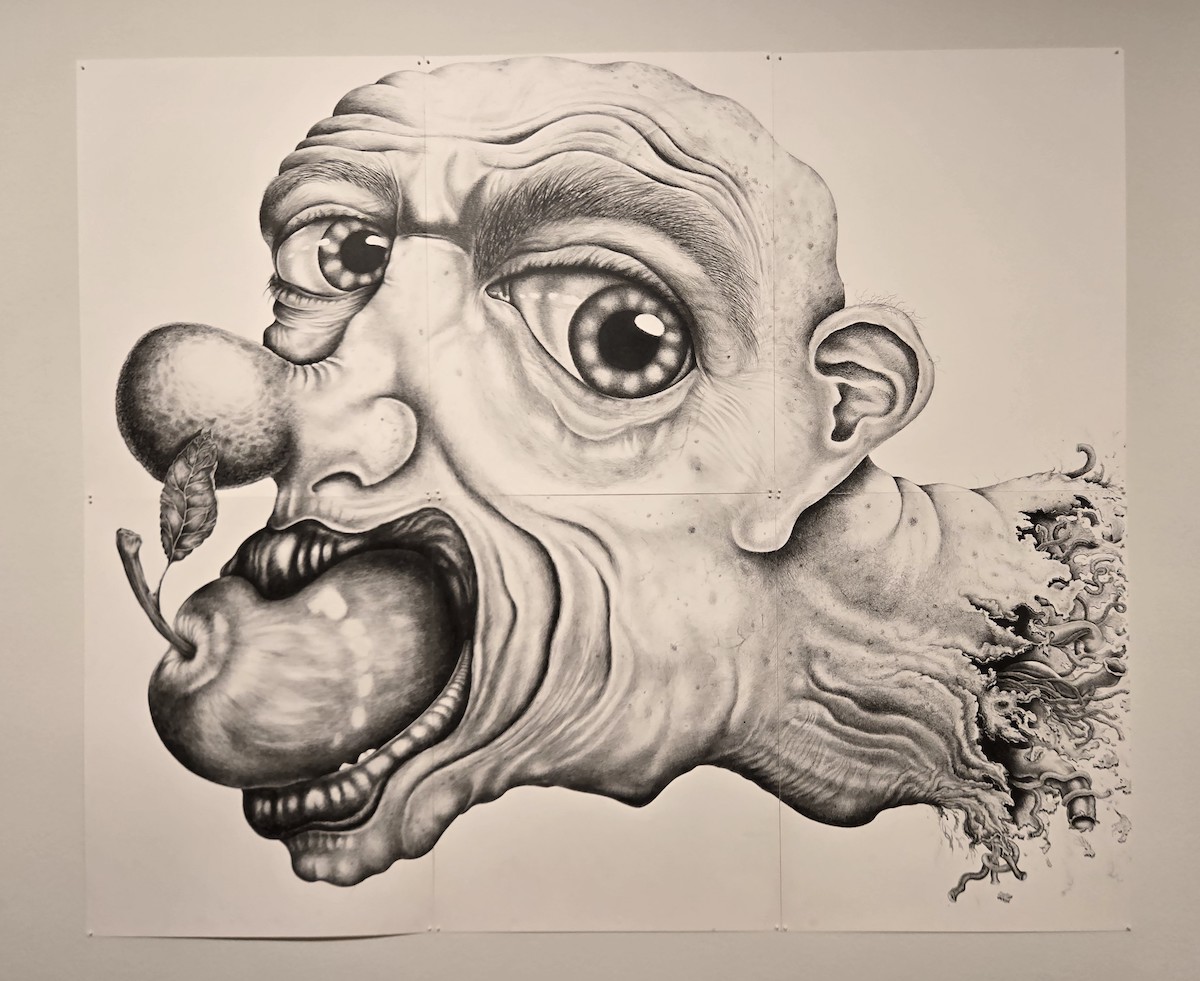
To start at the end, Keith Puccinelli’s fascinating posthumous show POOCH: The Art Full Life of Keith Julius Puccinelli ends its story with a vision of the artist’s own death. Wending back through the UCSB Art, Design & Architecture (AD&A) Museum to its deepest gallery, we come across the grimly witty piece “Yet Another Dead Motherfucker,” an image of a clown corpse that is, true to this artist’s form, beautifully drawn across several large pieces of paper and bigger than life and death.
The image might be more startling if we weren’t regularly prepared by the exhibition leading up to this point. The story — and the critical backstory — of Puccinelli’s art is conveyed outside the museum entrance. The drawing “3 Men with Tongues,” seen in its original small scale inside the museum, has been radically enlarged and serves as an epic poster, underscoring his familiar motif of exposed tongues. Puccinelli’s diagnosis of tongue cancer in 1997 ultimately ended his life in 2016, but it was also a motivating force for his prolific plunge into art-making in his later years, a fruitful second chapter of an artistic life that began with his highly successful work as a graphic artist.

For one signature touch, he gravitated toward the doppelgänger figure of the clown, spun from the proximity of his name to the commedia dell’arte Pulcinella, a tragic jester figure. Hence, the pithy nickname “Pooch.”

The twists and turns and voluminous body of art Puccinelli produced is the basis of POOCH, an illuminating portrait of a unique artistic voice. The exhibition is the long-awaited fruition of a project delayed by pandemic realities, showcasing the massive gift of more than 600 Puccinelli works to the AD&A Museum after his death. Curator Meg Linton was the ideal point person for this ambitious undertaking, having curated Puccinelli’s show at Otis in Los Angeles and as a personal friend of Puccinelli and his wife, Fran (who died six months before Keith).
Linton has wisely organized the show into facets of the artist’s life and work, including a room devoted to his graphic designs and such subject-driven subcategories as “Clowns” (with a jar of free red clown noses for the taking), “The Everyday” (images like the pooping cow, dubbed “Explosives Mfr.”), and the “The Smoking Section.” His love of smoking was something he revered and regretted, channeled into images of him with cigarettes, matchbook hijinks, and a ceremonial folk art–like matchstick door, from the “Lucky is Again” series.
On the register of celebrated artists Puccinelli admired and was influenced by are political satirist Robbie Conal and introspective-artist-with-a-dark-eyed-cartoonist flair Philip Guston. The Guston connection is made evident through the side by side showing of Puccinelli’s “Star Chaser” and Guston’s “Sea,” from the Museum’s permanent collection.

Certain single images jump out of the mass of imagery, like “Burning Animals, Jack Rabbit” and “Study for Apple-stuffed Head,” both tinged by a soft-edged surrealist/grotesque touch. It is a testament to Puccinelli’s personalized vision, audacity, and honesty — not to mention a wily and leavening sense of humor — that his art often juggles matters of mortality, social injustice, and life affirmation. And his own brand of artworldly clowning.
One of the rare, inspiring sidebar aspects of the POOCH exhibition is the generous front gallery wall space given over to Santa Barbara–based artists, tantamount to a selective survey of art born here. The connection of Puccinelli and this survey is at least twofold. He and his gallerist/collector wife, Fran, avidly collected work of local artists they admired, and many of whom were also part of the buzzing Puccinelli social web.
Among the highlights of this salon within an exhibition are works by Richard Ross, Jens Pedersen, and Dane Goodman, a longtime friend, motivator, and sometimes collaborator of Puccinelli, as in the unique and utterly collaborative show tug at the Westmont Museum of Art in 2015. Fabric artist Julia Ford’s “CLUBBED, Proboscis Longus” echoes Puccinelli’s interests in anatomical details and gleefully mutated iconography.
Speaking anatomically, one of the more disarming pieces in the show is his sculpture of a large tongue, a subject of obsession and foreboding for the artist. “Salt” situates a white, salt-lick-like tongue under glass, like a combo specimen and sculptural object. The piece is placed next to the final, death-related gallery to the rear of the museum space, where other end-of-the-line references pop up in pieces such as “The Ascension” — a view of clown shoes levitating above the ground — and the small but impactful “Tomb of the Unknown Artist.” Here, he winks at Warhol, applying a Campbell’s tomato soup can to a gravesite scene, with an implied snigger in the face of death.
Heading back to the entrance, we get a last whiff of Puccinelli’s sly whimsy on the way out, passing the word-based stencil piece he punnily calls “Exit Stencilist.”
Puccinelli has passed out of this dimension, but one sign of success with POOCH is the degree to which the show allows his art and his sensibility to spring to life in this posthumous bazaar of a show, lined with wit and his special brand of wary wisdom.
POOCH: The Art Full Life of Keith Julius Puccinelli is on view at UCSB’s Art Design & Architecture Museum through December 15. The museum is free to the public; gallery hours are Wednesday-Sunday, noon-5 p.m. See museum.ucsb.edu.

Premier Events
Thu, Nov 28
12:00 PM
Santa Barbara
Thanksgiving Dinner at The Harbor Restaurant
Fri, Nov 22
11:00 AM
Santa Barbara
Santa Barbara Antique & Vintage Show & Sale
Fri, Nov 22
6:00 PM
Santa Barbara
Introduction to Crochet Workshop
Fri, Nov 22
7:30 PM
Carpinteria
Rod Stewart VS. Rolling Stones Tribute Show
Fri, Nov 22
9:00 PM
Santa Barbara
Numbskull Presents: Jakob’s Castle
Sat, Nov 23
11:00 AM
Santa Barbara
Santa Barbara Antique & Vintage Show & Sale
Sat, Nov 23
12:00 PM
Santa Barbara
Fall 2024 Healing Arts Faire
Sat, Nov 23
7:30 PM
Santa Barbara
SBCC Theatre Arts Department presents “Mrs. Bob Cratchit’s Wild Christmas Binge”
Sun, Nov 24
11:00 AM
Santa Barbara
Santa Barbara Antique & Vintage Show & Sale
Sun, Nov 24
6:00 PM
Santa Barbara
¡Viva el Arte de Santa Bárbara! Mariachi Garibaldi de Jaime Cuellar
Sun, Dec 01
5:00 PM
Santa Barbara
Paseo Nuevo Tree Lighting Ceremony
Thu, Nov 28 12:00 PM
Santa Barbara
Thanksgiving Dinner at The Harbor Restaurant
Fri, Nov 22 11:00 AM
Santa Barbara
Santa Barbara Antique & Vintage Show & Sale
Fri, Nov 22 6:00 PM
Santa Barbara
Introduction to Crochet Workshop
Fri, Nov 22 7:30 PM
Carpinteria
Rod Stewart VS. Rolling Stones Tribute Show
Fri, Nov 22 9:00 PM
Santa Barbara
Numbskull Presents: Jakob’s Castle
Sat, Nov 23 11:00 AM
Santa Barbara
Santa Barbara Antique & Vintage Show & Sale
Sat, Nov 23 12:00 PM
Santa Barbara
Fall 2024 Healing Arts Faire
Sat, Nov 23 7:30 PM
Santa Barbara
SBCC Theatre Arts Department presents “Mrs. Bob Cratchit’s Wild Christmas Binge”
Sun, Nov 24 11:00 AM
Santa Barbara
Santa Barbara Antique & Vintage Show & Sale
Sun, Nov 24 6:00 PM
Santa Barbara
¡Viva el Arte de Santa Bárbara! Mariachi Garibaldi de Jaime Cuellar
Sun, Dec 01 5:00 PM
Santa Barbara












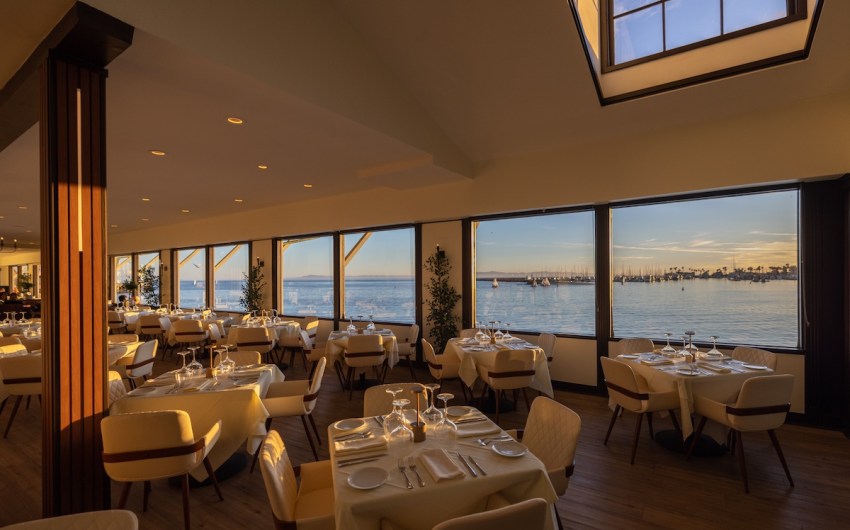

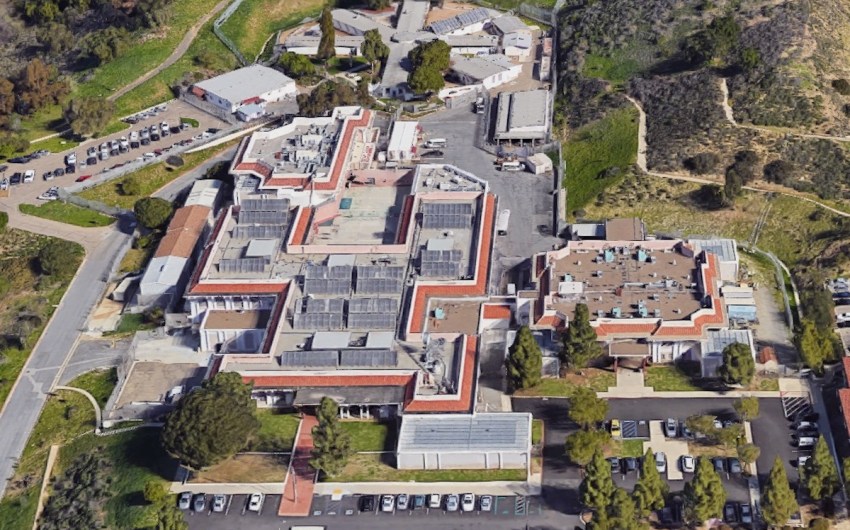

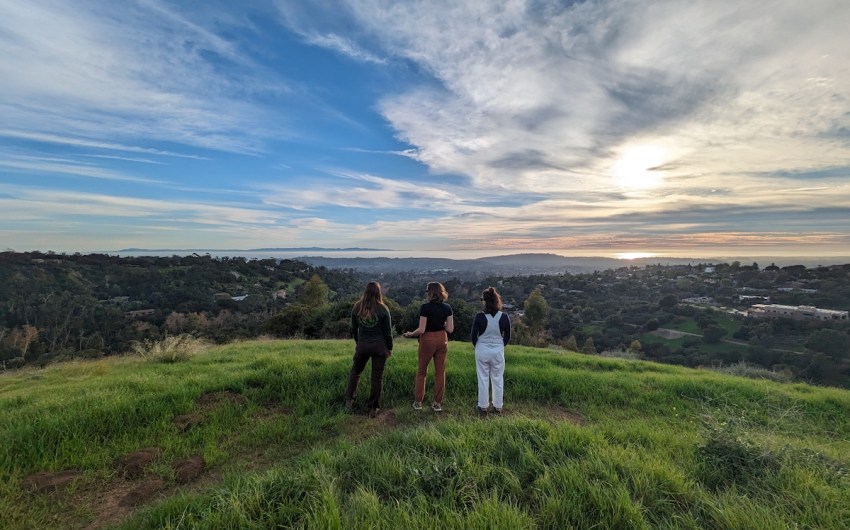

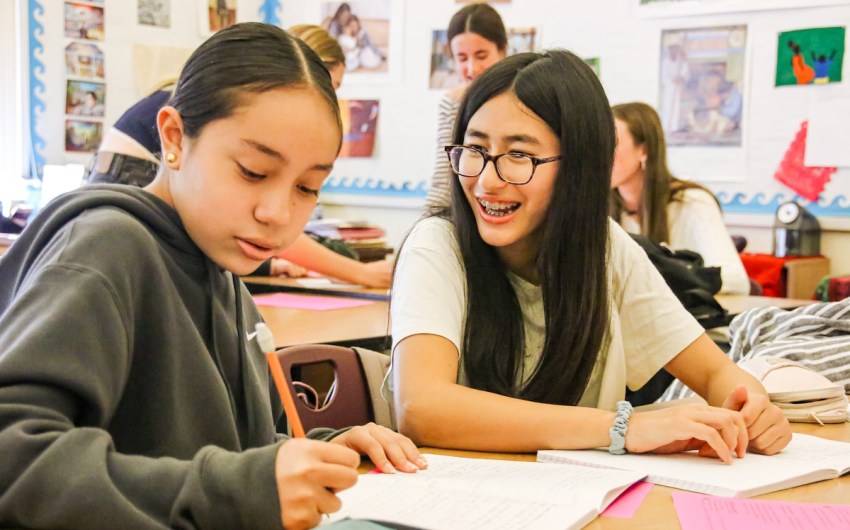












You must be logged in to post a comment.